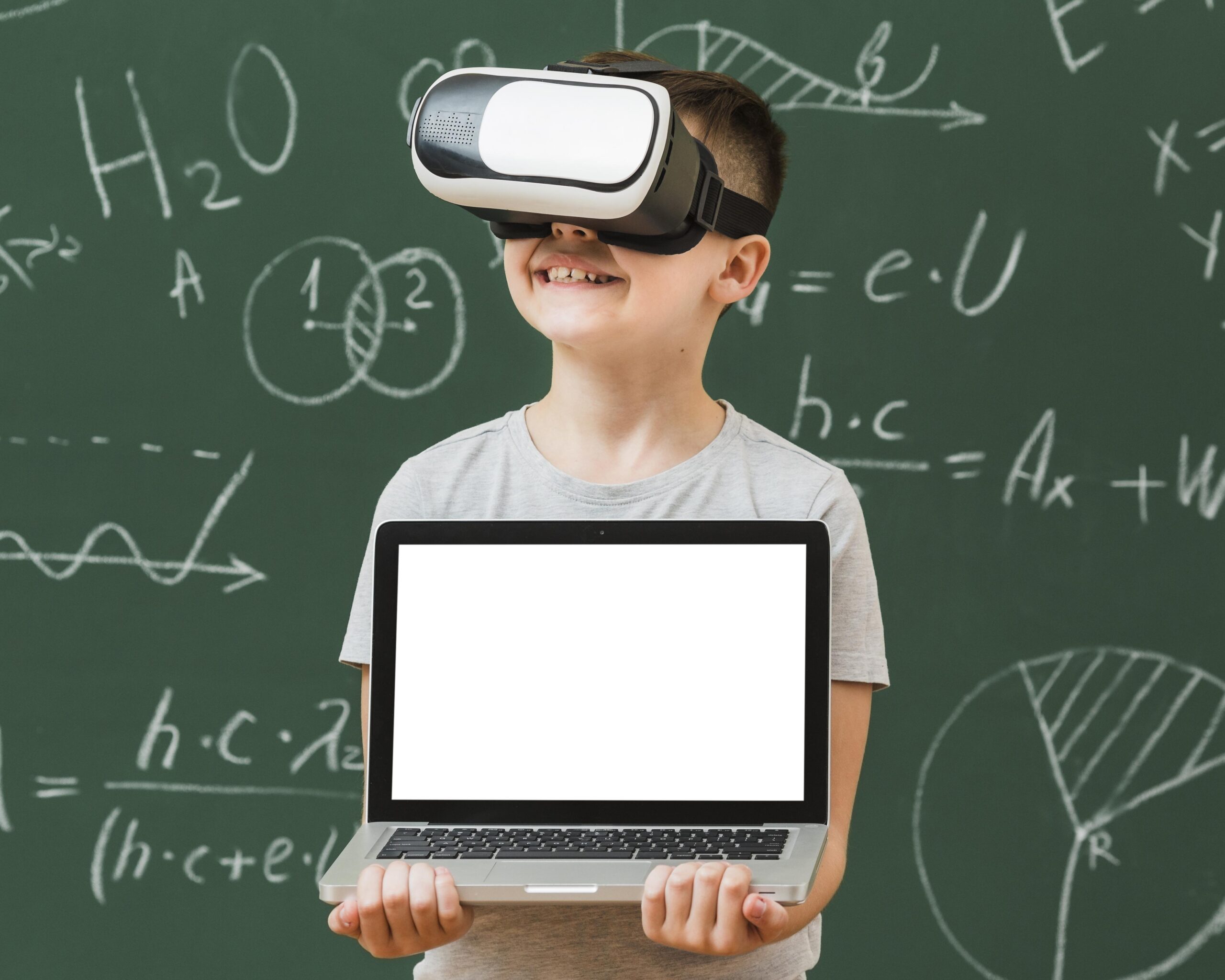
introduction to VR and AR in Education:
Define Virtual Reality (VR) and Augmented Reality (AR) and introduce their applications
in education.
Virtual Reality (VR) and Augmented Reality (AR) are cutting-edge technologies poised to
revolutionize education. VR immerses users in a digitally created environment, blocking out the
physical world, while AR overlays digital content onto the real world. In education, VR and AR
offer transformative applications. VR transports students to historical events, scientific
simulations, or virtual field trips, fostering deep engagement and experiential learning. AR
enhances traditional learning materials by overlaying additional information, creating interactive
textbooks and facilitating real-time collaboration. Both technologies open new possibilities for
personalized learning, accommodating diverse learning styles. As schools increasingly adopt
these immersive tools, students can explore complex subjects, from dissecting virtual organisms
to walking through ancient civilizations. The integration of VR and AR in education represents a
seismic shift, promising to make learning more interactive, engaging, and aligned with the
dynamic needs of 21st-century learners
Highlight the potential of immersive technologies to revolutionize the learning experience.
Enhancing Learning through Immersion:
VR offers immersive experiences that transport students to different environments,
enhancing engagement and understanding.
AR overlays digital content onto the real world, creating interactive and contextual
learning experiences.
Applications Across Subjects:
VR and AR can be applied across various subjects, from history and science to art and
mathematics.
Highlight case studies or pilot programs that have successfully integrated these
technologies into educational curricula.
Virtual Laboratories and Simulations:
the use of VR in creating virtual laboratories and simulations, providing students with
hands-on experiences in a controlled and safe environment.
AR can enhance physical spaces, transforming classrooms into interactive learning
environments.
Personalized Learning with VR and AR:
VR and AR can facilitate personalized learning experiences, catering to individual
learning styles and preferences.
Accessibility and Inclusivity:
VR and AR can make education more accessible, offering virtual field trips or
experiences that might not be feasible in the physical world.
accommodating diverse learning needs through immersive experiences.
Teacher Training and Professional Development:
Highlight the role of VR and AR in teacher training, allowing educators to explore
innovative teaching methods in a simulated environment.
ongoing professional development opportunities facilitated by these technologies.
Challenges and Considerations:
Acknowledge challenges such as cost, technical requirements, and potential distractions
in the classroom.
strategies for mitigating these challenges and ensuring effective integration.
Future Trends and Innovations:
emerging trends in VR and AR education.
potential advancements and innovations that could further transform the educational
landscape.
Conclusion: The Future of Learning with VR and AR:
Summarize key benefits and applications of VR and AR in education.
Emphasize the transformative potential of these technologies in shaping the future of
learning and teaching.

